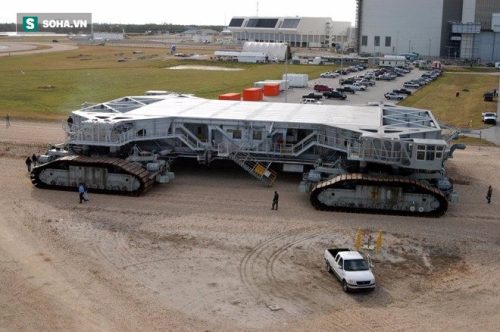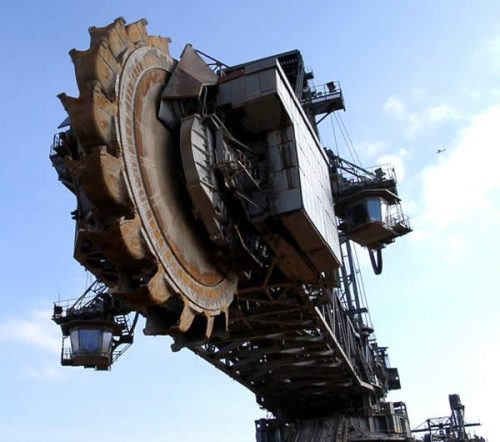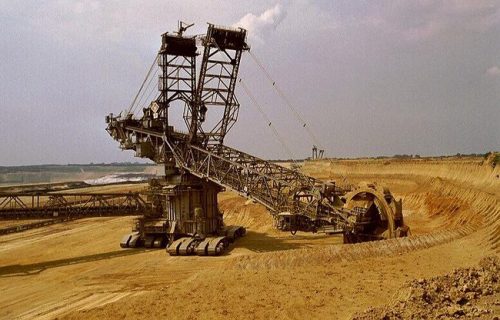The Bagger 288, also known as Excavator 288, is an awe-inspiring giant machine designed and manufactured by the German company Krupp on behalf of the mining company Rheinbraun.

Completed in 1978, this colossal self-propelled docking station took an impressive five years to design and construct. Upon its creation, it surpassed NASA’s renowned specialized conveyor Crawler Transporter as the world’s largest self-propelled crawler vehicle, earning the title of the “king” of old record holders.
The Monumental Dimensions of Bagger 288:
Bagger 288 boasts an astonishing appearance, measuring a staggering 240 meters in length, 46 meters in width, and towering to a height of 96 meters, equivalent to a 32-story building.
Standing beside it, an adult appears minuscule in comparison, emphasizing the true magnitude of this giant machine.
Unmatched Excavation Capabilities:

Equipped with 18 large buckets, each with a volume of 6.6 cubic meters and a rotation speed of 48 rpm, Bagger 288 showcases its formidable excavation power.
The machine can extract approximately 240,000 cubic meters of soil and rock per day and night, efficiently loading them into over 2,500 large trucks. To put this into perspective, this amount of rock could bury a standard football field to a depth of 30 meters.
A Colossal Weight and Steady Pace:
With a total weight of 13,500 tons, equivalent to approximately 293 T90 super tanks (around 46 tons each), Bagger 288 is an engineering marvel.

However, due to its significant size and mass, it has a limited maximum speed of only 10 meters per minute, far behind other giant machines like NASA’s Crawler Transporter, which reaches 3.2 kilometers per hour. Nonetheless, this slower pace does not hinder its primary task of mining on a grand scale.
A Rare Move Across Mines:
Bagger 288 has made a remarkable move between mines only once in its history. In 2001, it had to relocate from the Tagebau Hambach mine in western Germany after 13 years of relentless operation, embarking on a new challenge at Garzweiler, situated 22 kilometers away.

Due to the complexity and cost involved in dismantling and relocating, the only viable option was to set the massive machine in motion. With a speed of 10 meters per minute, it took nearly three weeks to conquer the 22-kilometer distance, necessitating the support of nearly 100 people and costs exceeding 8 million dollars.
Conclusion:
The Bagger 288 stands as a testament to human engineering ingenuity, an extraordinary machine that has captured the world’s attention with its exceptional capabilities and monumental dimensions. Its role in mining operations has been nothing short of extraordinary, and its rare relocation showcases the immense challenges faced by such colossal structures.
As it continues to play a vital role in the mining industry, the Bagger 288 remains a symbol of human accomplishment and the relentless pursuit of pushing the boundaries of engineering and technology.
